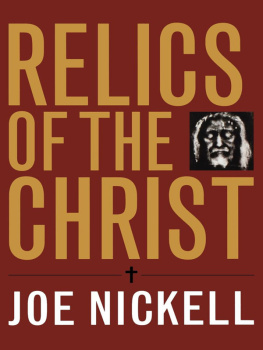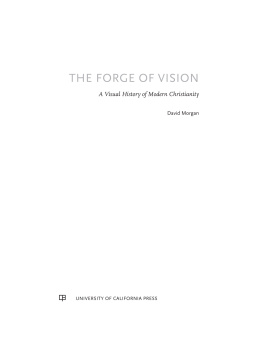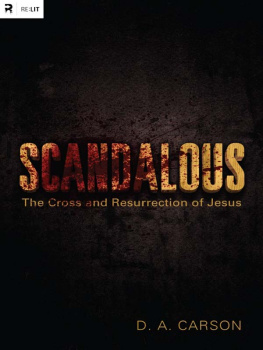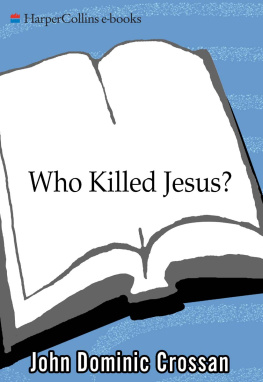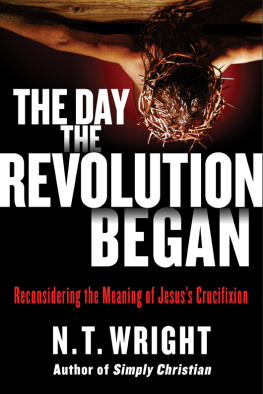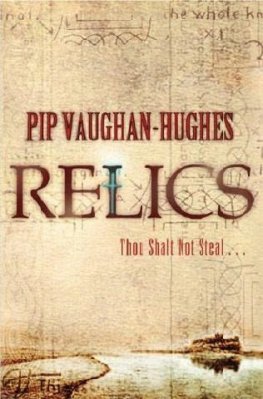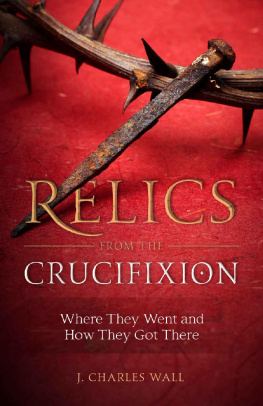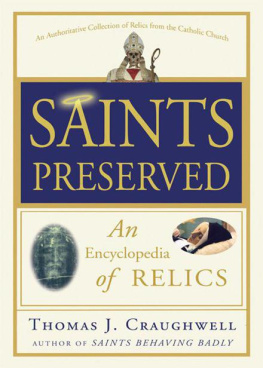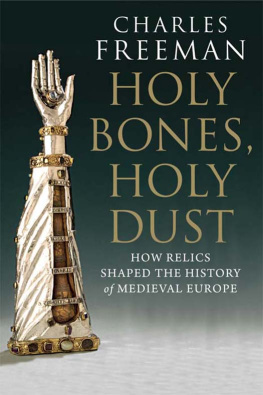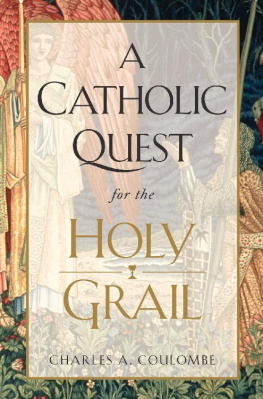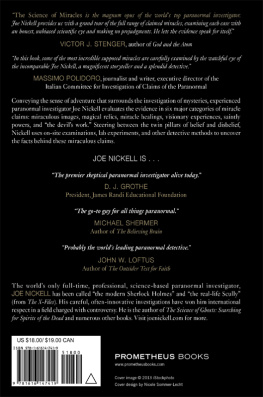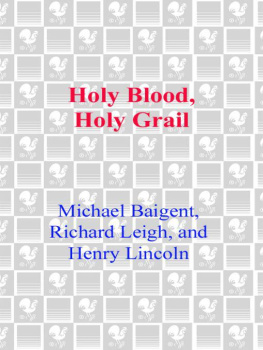R ELICS OF THE C HRIST
R ELICS
OF THE
C HRIST
Joe Nickell
THE UNIVERSITY PRESS OF KENTUCKY
Publication of this volume was made possible in part by a grant from the National Endowment for the Humanities.
Copyright 2007 by The University Press of Kentucky
Scholarly publisher for the Commonwealth, serving Bellarmine University, Berea College, Centre College of Kentucky, Eastern Kentucky University, The Filson Historical Society, Georgetown College, Kentucky Historical Society, Kentucky State University, Morehead State University, Murray State University, Northern Kentucky University, Transylvania University, University of Kentucky, University of Louisville, and Western Kentucky University. All rights reserved.
Editorial and Sales Offices: The University Press of Kentucky 663 South Limestone Street, Lexington, Kentucky 40508-4008 www.kentuckypress.com
11 10 09 08 07 5 4 3 2 1
Library of Congress Cataloging-in-Publication Data Nickell, Joe.
Relics of the Christ / Joe Nickell.
p. cm.
Includes bibliographical references and index.
ISBN-13: 978-0-8131-2425-4 (hardcover : alk. paper)
ISBN-10: 0-8131-2425-5 (hardcover : alk. paper)
1. Jesus ChristRelics. 2. Relics. 3. Religious articles. I. Title.
BT465.N53 2006
232.966dc22
2006029341
This book is printed on acid-free recycled paper meeting the requirements of the American National Standard for Permanence in Paper for Printed Library Materials.

Manufactured in the United States of America.

| Member of the Association of
American University Presses |
Contents
Illustrations
Acknowledgments
I am grateful for the assistance of many people, including all my colleagues at the Center for Inquiry in Amherst, New York, notably, Paul Kurtz, chairman, and Barry Karr, executive director, for their continued support. So, too, the entire staff of Skeptical Inquirer magazine, in which some portions of this book appeared.
Specifically, I want to thank Timothy Binga, director of CFI Libraries, for research assistance; Thomas Flynn, editor of Free Inquiry, for help in various ways; and Paul E. Loynes for word processing.
I appreciate all the efforts of the staff at the University Press of Kentucky, especially Gena Henry for her continuing interest in this book.
Many others assisted in various ways, especially my Italian colleagues and friends, including Paola de Gobbi, Francesco Chiminello, and Matteo Fillippini (in Venice); Massimo Polidoro (in Milan); Stefano Bagnasco, Andrea Ferrero, Claudio Pastore, Beatrice Mautino, and Mario Tomatis (in Turin); and Luigi Garlaschelli (who accompanied me to Naples).
And, of course, once again I am grateful for the encouragement and assistance of friends and family, especially the love of my life, Diana Harris; our beautiful daughter, Cherette Roycroft; my son-in-law, Randy Roycroft; and my grandsons, Chase and Tyner.
I NTRODUCTION
The Life of Jesus
The founder of Christianity, the religious movement that helped shape the course of Western civilization, was an itinerant, wonderworking, Palestinian rabbi from Nazareth named Yeshua (in Hebrew), today known as Jesus (from the Greek form of that name). He has been viewed in quite different ways. As portrayed in the Christian Gospels, he was the Messiah, or Christ (from the Greek anointed); scholars have attempted to understand him as a historical figure, sometimes called the Nazarene; and some have even seen him as largely or even completely fictitious, the product of an evolving mythology. This chapter treats each of these views in turn and then sets the tone for the remainder of the book, which investigates the reputed relics of Jesus and his family and followers, examining how they contribute to an understanding of what is necessarily a story of a story.
The Christ
The primary source of information about the life of Jesus is the four GospelsMatthew, Mark, Luke, and Johnsupplemented by other Christian texts, including apocryphal Gospels, and scant non-Christian writings. Three of the four GospelsMatthew, Mark, and Lukeare known as the synoptic Gospels (from the Greek synoptikos, with one eye) because of their similarities. Matthew appears first in the canon, although it is now believed that Mark was written earlier (Asimov 1969, 108). Matthew addresses a Jewish audience, Luke a largely Gentile one, and both appear to have used Mark as a source, possibly in an earlier form. Johns Gospel is an independent production, reporting sayings of Jesus in the form of discourses that differ from the accounts of the other three (Encyclopaedia Britannica 1960, s.v. Jesus Christ).
Marks Gospel says almost nothing about the origins of Jesus. Matthew (1:116) and Luke (3:2338) provide genealogies, but they are contradictory as to the father of Joseph, Jesus father, as was supposed (Luke 3:23). Lukes questioning of the identity of Jesus father may acknowledge the evangelists acceptance of the virgin birth, or it might be an early scribes insertion (Asimov 1969, 275). The forthcoming birth was announced by an angel that appeared to either Joseph (Matthew 1:2024) or Mary (Luke 1:2638); see . Only Matthew (2:13) tells of wise men (Magi) from the east who are led by a star to worship Jesus, born in Bethlehem, as King of the Jews. Only Luke (2:818) relates how an angel told shepherds of the birth, prompting them to visit the manger where the infant lay, there having been no room in the inn.
Again, only Luke (2:4050) tells the story of twelve-year-old Jesus visiting the temple in Jerusalem and astonishing his elders with his brilliance. Luke (2:52) then skips over the early years by stating, And Jesus increased in wisdom and stature, and in favour with God and man. Next, all four Gospels relate Jesus baptism by John the Baptist, a historical figure mentioned by Josephus. In Mark (1:911), the Spirit of God enters Jesus on this occasion; in Matthew (3:1415), however, the Holy Spirit had already entered Jesus when he was conceived, so the focus is on John the Baptist recognizing that Jesus is the Messiah.
Following a period of fasting and soul-searchingdramatized by Matthew (4:111) as a series of temptations by the devilJesus begins his ministry of teaching and working miracles. Rejected by his fellow Nazarenes for daring to compare himself with the prophets Elijah and Elisha, he states: A prophet is not without honour, but in his own country, and among his own kin, and in his own house (Mark 6:4). He proceeds to nearby Galilee, and, writes Matthew (4:17), From that time Jesus began to preach, and to say, Repent: for the kingdom of heaven is at hand. At the shore of the Lake of Gennesaret (later known as the Sea of Galilee), Jesus sees two fishermen, Simon Peter and his brother Andrew, casting a net, and he says, Follow me, and I will make you fishers of men (Matthew 4:19).
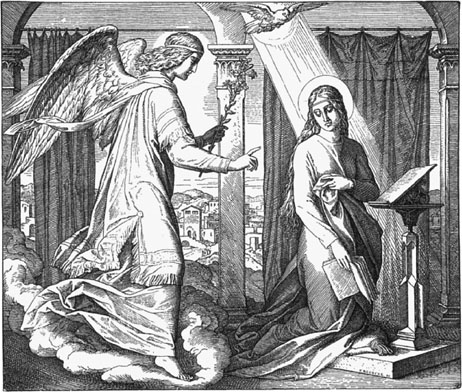
Figure I.1. The Annunciation of Jesus birth is related in the Gospel of Luke (mid-nineteenth-century illustration by Julius Schnorr von Carolsfeld).
The multitudes begin to gather and to follow him, and he delivers what came to be known as the Sermon on the Mount. This is actually less a sermon than a collection of representative sayings, which typically express Old Testament teachings (Asimov 1969, 165). For example, Jesus says, Blessed are the meek: for they shall inherit the earth (Matthew 5:5); this follows Psalms 37:11, But the meek shall inherit the earth.
Next page
